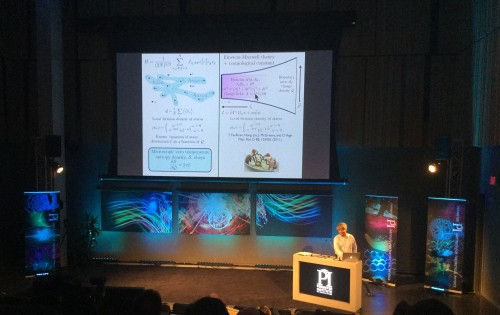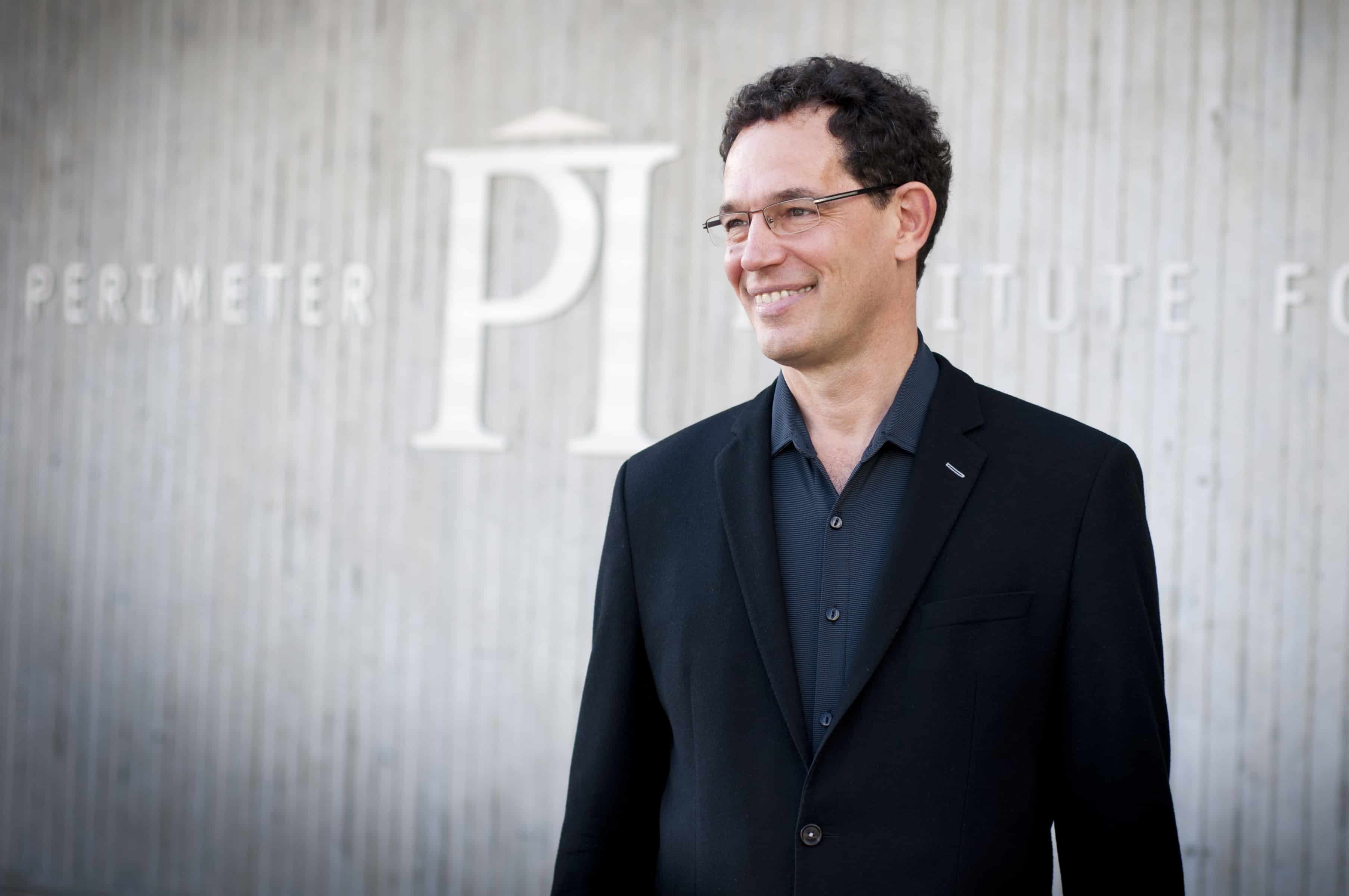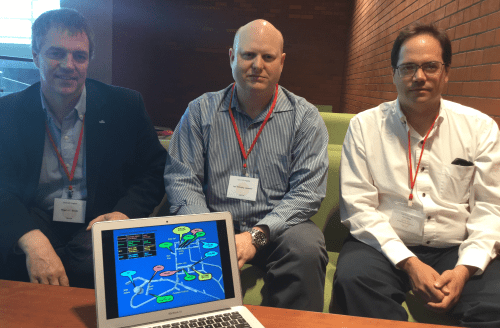Why did Newton’s laws take the form they did? We are so familiar with the three laws of motion, the inverse square law of gravity and even “toys” such as Newton’s cradle that we can easily overlook how such achievements were actually reached and how they fit in with our present understanding of the world.
In To Explain the World: the Discovery of Modern Science, the particle physicist and Nobel laureate Steven Weinberg addresses this gap by giving us a historical tour of the development of the scientific method as we know it today. On the way, he gives us plenty of his own comments on what he, as a physicist, thinks about the way we got there.
This story is fascinating, with plenty of ups and downs throughout history, yet a big question remains: why does Weinberg avoid placing this narrative squarely in the context of the philosophy of science? After all, he is dealing with some big questions, such as the degree to which laws really “explain” the world and the sense in which modern science was there to be “discovered”. Many philosophers have already pored over these topics in much greater depth, so why not make use of their expertise?
I will return to this question later, for Weinberg’s tour is worth taking in itself. He guides us through four main “landscapes” of scientific thought, starting with the early years of ancient Greece and some of the first major efforts to speculate about nature. Once these foundations are laid, he moves on to the great developments in Greek astronomy that culminated in the competing Aristotelian and Ptolemaic theories of planetary motions.
The next landscape is the Middle Ages, which is more multicultural, being a mix of Greek thought and contributions from Arab science and European universities – all of which prepared the ground for the next landscape, which is the scientific revolution that took place in the 17th century.
Here, Weinberg plunges us into the writings and thinking of the familiar characters of Copernicus, Galileo, and Kepler, ending with Newton and the beginning of what we would call “modern science” (the final landscape in this journey).
On the way, he introduces us to less familiar but important contributors, such as Hipparchus, who is generally regarded as the greatest astronomical observer of the ancient world, and al-Khwarizmi, an Arab scientist of the 8th century who brought us our familiar “Arabic” numbers (which are actually of Indian origin).
One aspect of the book that I particularly enjoyed was the inclusion of many quotes from works that I knew of, but had never had the time to look up myself, such as Aristotle’s On the Heavens (containing his empirical evidence for the spherical shape of the Earth) or the annotated quotes of the three laws of motion from Newton’s Principia. Some of Weinberg’s comments on the way we do science also serve as a good reminder for us today. For example, Newton achieved what he did by realizing the power of being able to predict simple phenomena (the law of gravity) without necessarily being able to explain the more complicated aspects (what gravity is). Very good advice; start with the simple.
The book is not overlong (the main text runs to just 267 pages) and is fairly easy to follow. It is technically thorough from the physics point of view, and the generous endnotes, bibliographic sources and index make it a useful resource for further exploration. On the other hand, though, I rather suspect that philosophers of science will have a field day with it.
While Weinberg offers some useful historical commentary, and makes some attempts to acknowledge certain aspects of the philosophy of science (such as the uncertainty of theories or the possibility that the Standard Model could change significantly), the book’s lack of connections to important previous works on the subject considerably weakens Weinberg’s attempts to shore up the position of realism – the idea that an objective reality exists that is independent of human beliefs, philosophical systems and so on.
Indeed, there is a stark contrast between Weinberg’s evident suspicion of philosophers (he does not appear to appreciate the philosophy of Bacon, Descartes or Kuhn much at all) and his obvious desire to contribute to the philosophy of science by putting forward his own arguments for realism and reductionism.
An example of this reluctance to engage may be found in the way in which Weinberg describes the separation between science and religion during the scientific revolution. He calls this a “divorce” brought about by the need to “outgrow a holistic approach to nature”. The classical view, though, is that the shift had more to do with the desire of Bacon, Galileo, Newton and others to remove personal bias from scientific endeavour (despite their having religious convictions). This fundamental change in thinking – one that is crystallized in the writings of Descartes as being a separation between matter and spirit, res extensa and res cogitans – is what gave modern science its objectivity. Why does Weinberg celebrate the pleasure scientists experience when a law is “discovered” and not want philosophers to experience the same pleasure in discovering patterns within the history of the scientific method?
In some ways, Weinberg’s desire to keep philosophy at a respectable distance is understandable. There are two major reasons for this. The first is the difficulty scientists have in getting a handle on the philosophy of science as a subject. To remedy this difficulty, I would recommend having Mel Thompson’s very accessible Introduction to the Philosophy of Science (2001 Hodder Headline) at hand when reading To Explain the World in order to help judge what Weinberg is saying. The second, more fundamental, reason for keeping philosophy at arm’s length is due to the attacks on science made by adherents of social constructivism. The Sokal–Bricmont affair of the mid-1990s, in which Weinberg was involved, illustrates well the disturbing gulf that still exists today between science and some strands of philosophy.
This incident was part of what was dubbed the “Science Wars”, although this was in fact less a meeting of armies (or minds) than the lobbing of boulders from entrenched positions (see for example Knowledge and the World, M Carrier et al., Springer 2004). If Weinberg wants to reinforce the position of realism – a worthy cause – I think he would do better to reconcile himself with classical philosophy of science. By admitting its usefulness and achievements, he would be better equipped to fight against the real enemy of science – the relativism at the base of post-modernism – without falling into the extremism of scientism. He could also take courage from a more recent philosophical movement, known as speculative realism, that appears in, for example, the work of Quentin Meillassoux (After Finitude) and the physicist-philosopher Bernard d’Espagnat (Veiled Reality).
In this way, instead of skirting round the battlefield, Weinberg could take us into it, equipped with the sort of weapons that philosophers understand and respect, to defend science against relativism in hand-to-hand combat. And, on the way, by raising again questions about the basis of science, radical progress might be made in such fields as reconciling quantum mechanics with general relativity – just as Kuhn observed often happens before a paradigm change.
- 2015 Allen Lane/Harper Collins £20.00/$28.99hb 432pp



